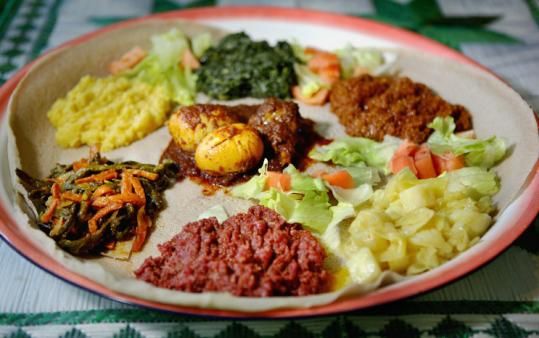|
Eritrean Units Of Measurement
A number of units of measurement were used in Eritrea to measure length, mass, capacity, etc. Units during the first half of the 20th century In addition to metric units, a number of local and provincial units were used in Eritrea. Length Several units were used to measure length. Some of units (note: these units are vary from one province or city to another and these units are local units) are given below: 1 cubi = 0.32 m 1 emmet (1 derah) = 0.46 m. Mass Several units were used to measure mass. These units are vary from one province or city to another and these units are local units. One rotolo (pound) was equal to 0.448 g. Some other units are given below: 1 okia (ounce) = rotolo 1 gisla = 163 kg. Capacity Several units were used to measure mass. These units are vary from one province or city to another and these units are local units. One messé was equal to 1.50 L. Some other units are given below: 1 cabaho = 4 messé 1 tanica = 12 messé 1 ghebeta = 16 messé ... [...More Info...] [...Related Items...] OR: [Wikipedia] [Google] [Baidu] |
Units Of Measurement
A unit of measurement, or unit of measure, is a definite magnitude (mathematics), magnitude of a quantity, defined and adopted by convention or by law, that is used as a standard for measurement of the same kind of quantity. Any other quantity of that kind can be expressed as a multiple of the unit of measurement. For example, a length is a physical quantity. The metre (symbol m) is a unit of length that represents a definite predetermined length. For instance, when referencing "10 metres" (or 10 m), what is actually meant is 10 times the definite predetermined length called "metre". The definition, agreement, and practical use of units of measurement have played a crucial role in human endeavour from early ages up to the present. A multitude of System of measurement, systems of units used to be very common. Now there is a global standard, the International System of Units (SI), the modern form of the metric system. In trade, weights and measures are often a su ... [...More Info...] [...Related Items...] OR: [Wikipedia] [Google] [Baidu] |
Eritrea
Eritrea, officially the State of Eritrea, is a country in the Horn of Africa region of East Africa, with its capital and largest city being Asmara. It is bordered by Ethiopia in the Eritrea–Ethiopia border, south, Sudan in the west, and Djibouti in the southeast. The northeastern and eastern parts of Eritrea have an extensive coastline along the Red Sea. The nation has a total area of approximately , and includes the Dahlak Archipelago and several of the Hanish Islands. Hominid remains found in Eritrea have been dated to 1 million years old and anthropological research indicates that the area may contain significant records related to the evolution of humans. The Kingdom of Aksum, covering much of modern-day Eritrea and Tigray Region, northern Ethiopia, was established during the first or second century AD.Henze, Paul B. (2005) ''Layers of Time: A History of Ethiopia'', . It adopted Eritrean Orthodox Church, Christianity around the middle of the fourth century. Beginning in ... [...More Info...] [...Related Items...] OR: [Wikipedia] [Google] [Baidu] |
Culture Of Eritrea
The culture of Eritrea is the collective cultural heritage of the various populations native to Eritrea. Eritrea has nine recognized ethnic groups. Each group have their own unique traditions and customs but some traditions are shared and appreciated among different ethnic groups. The local culture consists of various, and often quite similar, traditions practiced by the nation's many Cushitic languages, Cushitic and Ethiopian Semitic languages, Ethiopian Semitic-speaking Afroasiatic languages, Afro-Asiatic ethnic groups, in addition to those practiced by the area's Nilotic minorities. Eritrean culture is in some ways similar to the cultures of other countries in the region. Coffee ceremony One of the most recognizable parts of Eritrean culture is the coffee ceremony. Coffee (Ge'ez alphabet, Ge'ez ቡን ''būn'') is offered when visiting friends, during festivities, or as a daily staple of life. If coffee is politely declined then most likely tea ("shy" ሻሂ ) will be served ... [...More Info...] [...Related Items...] OR: [Wikipedia] [Google] [Baidu] |


